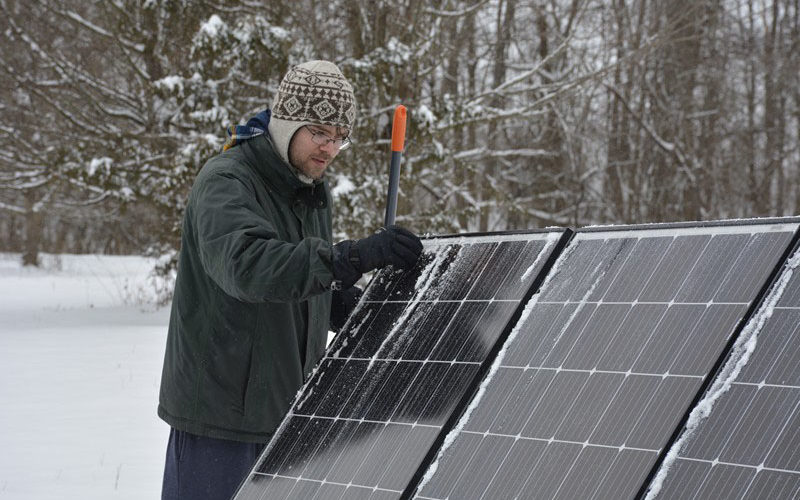AMANDA BANCROFT
Making Ripples
Whether we get our electricity, heat and other utilities from a grid system maintained by a city or off the grid maintained by ourselves, winter storms present a challenge. Both renewables (solar, wind, etc.) and non-renewables (coal, natural gas, etc.) are threatened by extreme winter weather and require maintenance, including winterization or some amount of preparedness. On grid or off grid, renewables or not, we all can make ripples by reducing our consumption of utilities.
Eliminating wasted power is especially important to help other families survive when the supply is strapped. Utility companies almost begged the public to conserve energy. Millions of utility customers lost power and heat in several states, and many got hit with huge bills. Even in Benton and Washington counties in Arkansas, “rolling blackouts” occurred for those on the electric grid. Pea Ridge customers lost natural gas when pipes froze. Renewables aren’t to blame, but they aren’t immune from winter, either.

Ryan and Amanda Bancroft took turns clearing the snow and ice off their solar panels during the recent winter weather in Northwest Arkansas.
(Courtesy Photo/Amanda Bancroft)
Our off-grid cabin was also not immune. It was not built to withstand temperatures of -20 degrees Fahrenheit. Even with indoor heating as well as heat tape and various layers of insulation on our outdoor pipes leading from our 550 gallon cistern, some pipes froze. We went a week without running water. As Ryan explained on our Ripples Blog Facebook page, “we used three 5-gallon jugs with a pressure pump on top to dispense water. We managed to slim our usage down to about 3 gallons per day between the two of us (for drinking and sanitation).” Our bathtub/shower p-trap froze, and would not drain. A friend let us take a shower at his house, and that was our only shower for the week.
The propane hose and regulator couldn’t handle conditions of snow, ice and extreme temperatures, so we briefly lost heat while Ryan replaced the hose and regulator, then covered them with a protective tarp. (No heating problems after that.) Snow covered our solar panels repeatedly, so we took turns sweeping them off in the field where they are set up. We measured up to 11 inches of snow here, with most of the farm getting around six and a half inches. The battery system that stores solar energy performs less well when cold, so we had to open the wooden boxes that house our battery bank and get them to room temperature. There wasn’t enough sun over many days while the storm was overhead, snowing intermittently, so electricity became a concern. To prevent the system from dropping below 50 percent, we had to run a gasoline-powered generator. But while that generator is charging the batteries for about six hours on average, we can’t cook or use most appliances. Our generator isn’t large enough for our needs and we’re shopping for the correct size now so that someday we can use appliances like the stove while the batteries charge.
Some people suggested we boil snow for water, which is a great tip if you have electricity consistently. We also want to share our tips that we learned from this experience. Have emergency drinking water on hand, even if you have protected your plumbing. Food that can be eaten without cooking (fruits, energy bars, peanut butter sandwiches) reduces the need for electricity. A thermos can store soup and hot beverages for periods when you anticipate going without power. Solar panels are easier to clear of snow when they’re on the ground. Don’t heat or light unused rooms if possible. Use less during peak demand. Consider adding some type of solar system that could be another tool in your kit to save lives and prevent damage to your home during the aftermath of a storm when the sun returns but there is still no grid power. What did you learn this month? Share with us at MakeSomeRipples@Gmail.com
Amanda Bancroft is a writer, artist, and naturalist living in an off-grid tiny house on Kessler Mountain. She and her husband Ryan blog about their adventures and offer tips to those wanting to make a difference at www.RipplesBlog.org.










